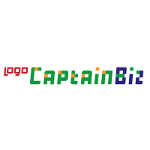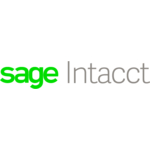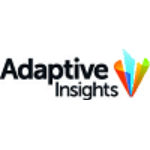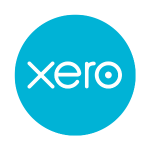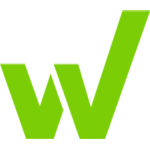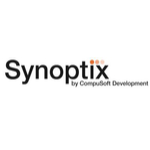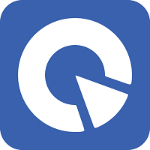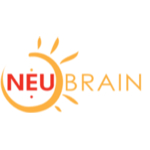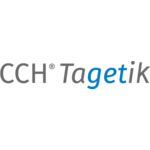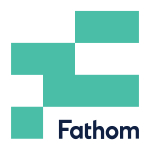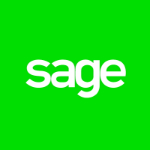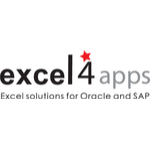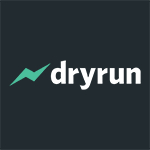TechnologyCounter provides genuine, unbiased real user reviews to help buyers make informed decisions. We may earn a referral fee when you purchase through our links, at no extra cost to you.
List of 15 Best Financial Reporting Software
Showing 1 - 15 of 73 productsCaptainBiz is a software designed to streamline your business operations and elevate your success. With its user-friendly interface features, CaptainBiz empowers businesses of all sizes to efficiently manage tasks, increase productivity, and achieve...Read CaptainBiz Reviews
Sage Intacct is a financial statement software designed for small and medium-sized companies that operates on cloud technology. Sage Intacct comprehensive features enable automatic handling of crucial finance and accounting processes while providing...Read Sage Intacct Reviews
Adaptive Insights is a tool designed to revolutionize your financial planning and analysis process. With its user-friendly interface features, this cloud-based software helps businesses of all sizes create accurate forecasts, streamline budgeting, an...Read Adaptive Insights Reviews
Acumatica is a highly adaptable and user-friendly cloud-based business management solution designed to streamline and optimize operations for modern businesses. With its robust features and flexible platform, Acumatica empowers companies to achieve g...Read Acumatica Reviews
Xero Accounting is a cloud-based accounting software designed to simplify and streamline financial management for individuals and small businesses. With its user-friendly interface features, Xero helps users efficiently track income, expenses, and ca...Read Xero Accounting Reviews
Workiva is a leading software company that has revolutionized the way businesses manage and report their data. With innovative technology and a user-friendly interface, Workiva provides a seamless platform for organizations of all sizes to collaborat...Read Workiva Reviews
Synoptix is a financial reporting and analysis software designed to help businesses gain valuable insights and make data-driven decisions. With its intuitive interface and customizable reports, Synoptix streamlines financial processes and provides ac...Read Synoptix Reviews
Qvinci, where we transform financial data into actionable insights. Our innovative software automates financial reporting for businesses of all sizes, allowing you to easily track and analyze your data in real-time. Say goodbye to the spreadsheet cha...Read Qvinci Reviews
Neubrain is a software that transforms the way businesses manage their data, make decisions, and plan for the future. With unmatched efficiency and accuracy, Neubrain empowers organizations to unleash their full potential and thrive in todays fast-pa...Read Neubrain Reviews
CCH Tagetik, a leading software solution designed to streamline financial processes and drive enterprise performance. With advanced features and robust capabilities, CCH Tagetik empowers businesses to make agile decisions and stay ahead in todays com...Read CCH Tagetik Reviews
Fathom, the ultimate data visualization software, allows you to uncover insights and make informed decisions with ease. Our user-friendly interface and powerful tools help you transform complex data into meaningful visuals, without any barriers. Elev...Read Fathom Reviews
Sage 50cloud provides a comprehensive desktop accounting solution that streamlines account management and allows for more focus on business growth. Their user-friendly Sage 50cloud Accounting software has greatly benefitted small businesses and entre...Read Sage 50cloud Reviews
NoBrokerHood is a platform that brings convenience, security, and community living together. Say goodbye to the hassles of traditional housing societies with NoBrokerHoods seamless technology that simplifies managing daily tasks, ensures safety, and...Read NoBrokerHood Reviews
Excel4apps is a and versatile software designed to streamline and enhance your experience with Microsoft Excel. As a leading provider of Excel-based solutions, Excel4apps offers a variety of tools and resources to make your data management and report...Read excel4apps Reviews
Dryrun - your ultimate financial planning and forecasting tool. Designed to streamline your business operations and maximize profitability, Dryrun allows you to create accurate financial projections, identify potential roadblocks and make informed de...Read Dryrun Reviews
- What Is Financial Reporting Software?
- Top Reasons Why Businesses Need Financial Reporting Software?
- What Are the Top Key Features of Financial Reporting Software?
- What Are the Top Benefits of Financial Reporting Software?
- What Are the Steps to Choose the Right Financial Reporting Software?
- What Are the Types of Financial Reporting Software for Different Industries?
- What Are the Technology Trends for Best Financial Reporting Software?
- What Are the Deployment Options for Financial Reporting Software?
What Is Financial Reporting Software?
Financial reporting software refers to a category of computer applications designed specifically for the purpose of generating financial reports. These reports are utilized to inform and guide decision-making processes pertaining to the financial state of an organization. The software facilitates efficient retrieval, examination, and arrangement of financial data for users.
Additionally, financial reporting tools has the capability to produce a diverse range of graphical reports and graphs, thereby facilitating the analysis and comprehension of financial data. The program facilitates the generation of personalized reports and the examination of financial data at varying levels of granularity.
The financial reporting system facilitates the generation of financial statements, encompassing the balance sheet, profit and loss statement, and cash flow statement. Additionally, it aids in the development of budgets and predictions. The software additionally enables users to do comparisons between various financial conditions and indicators.
In addition to these reports, a range of financial models can be employed to simulate and evaluate prospective future events and outcomes. The best financial reporting software commonly incorporates several functionalities, including but not limited to financial trends analysis, data input capabilities, invoice creation, and data integration capabilities to facilitate compatibility with external applications.
This functionality allows users to efficiently detect patterns and evaluate data points for present or future comparisons. The finance reporting tools frequently operates as a centralized repository of financial data across several business divisions and operations, facilitating the generation of a comprehensive financial overview of an organization.
Top Reasons Why Businesses Need Financial Reporting Software?
1. The use of automation processes facilitates time-saving measures through the optimization of data input procedures, hence eliminating the need for manual intervention.
2. The financial reporting system offers a high level of accuracy and facilitates the rapid generation of tailored reports to support decision-making processes.
3. One of the benefits of utilizing structured forms and dashboards is the improvement of communication and collaboration opportunities.
4. The finance reporting tools offers a transparent and traceable record of transactions that can be subject to auditing.
5. Enhances the amount of visibility throughout the financial activities and offers a comprehensive oversight at a higher level.
6. The financial reporting system automatically performs the process of reconciling entries from several data sources, hence guaranteeing precision and removing any potential errors.
7. The monitoring of important indicators is conducted to identify and emphasize areas of potential risk or inefficiency, with the aim of mitigating fraudulent activities and enhancing profitability.
8. The finance reporting software effectively monitors, maintains, and incorporates essential financial data into other software and systems.
9. One of the benefits of utilizing real-time data is that it facilitates the simplification of budgeting and forecasting decisions.
10. Efficiently and effortlessly integrates different accounts into a unified perspective.
11. Notifies users of any anomalies and irregularities.
12. The financial reporting tools produce financial statements, legally mandated documentation, and reports with enhanced efficiency and precision.
13. The finance reporting tools incorporates automated updates from financial institutions and other relevant sources.
14. The finance reporting software allows the organization to comply with all requisite legislation and market demands.
15. The customized features and capabilities enhance financial reporting and analytics.
What Are the Top Key Features of Financial Reporting Software?
The top key features of financial reporting software include:
1. Collation and Consolidation of Data: The capacity to compile and integrate financial information from many origins in order to generate precise and punctual financial statements.
2. Automated Data Entry: The implementation of automated data entry processes enables the financial reporting solutions to receive entries from many sources, hence removing the need for manual data entry and reducing the likelihood of errors.
3. Customizable Reports: The capacity to generate personalized financial reports incorporating user-specified algorithms, analytical observations, and data elements.
4. Reporting on Multiple Projects: The capacity to promptly and precisely document several projects and efforts across diverse finance reporting software.
5. Document Management: The capacity to electronically transfer, retain, and oversee diverse documents pertaining to financial records.
6. Visual Representation of Data: The utilization of visual aids such as charts, graphs, and tables to effectively analyze financial data and promptly discern prevailing trends and patterns.
7. Analytics and Insights: The capacity to generate insights and analytics pertaining to several facets of financial data, such as costs, revenue, profits, and so forth.
8. Accessibility and Security: The implementation of a multi-tiered user authentication system enables individuals to securely access financial data from any location. Furthermore, the financial reporting tools ensure the safe storage of documents and data.
9. Budgeting and Forecasting: The capacity to allocate and project financial outcomes for forthcoming timeframes using present and historical facts.
10. Database Integration: The capacity to incorporate financial data into an established database, facilitating streamlined data interchange, synchronization, and analysis.
What Are the Top Benefits of Financial Reporting Software?
1. Increased Efficiency: Financial reporting software enables users to consolidate and optimize various activities associated with financial reporting inside a cohesive system, resulting in time and energy savings when compared to manual or fragmented solutions.
2. Improved Accuracy: Financial reporting system mitigates the occurrence of errors in the process of preparing financial statements by means of automation.
3. Increased Transparency: The act of disclosing financial data, which is housed within a finance reporting software, to relevant stakeholders facilitates a heightened comprehension of the fiscal well-being of the enterprise.
4. Improved Compliance: The best financial reporting software streamlines the procedure of adhering to the financial guidelines established by external regulatory entities.
5. Increased Collaboration: The utilization of financial reporting tools facilitates effective collaboration across many departments within a business through the seamless exchange of data.
6. Improved Analysis: The utilization of financial reporting system facilitates expedited access to financial data, hence streamlining the process of identifying patterns and extracting valuable insights from the data.
What Are the Steps to Choose the Right Financial Reporting Software?
1. Identify Your Needs: It is important to evaluate your organization’s needs and identify the features that you need in a financial reporting software system. Make sure to consider the current and future requirements of your organization.
2. Research Different Solutions: Do thorough research to find the best solution for your organization. Check the features, performance, and limitations of different systems. Also, look into reviews from organizations that have used the system.
3. Compare Your Options: Consider the features and performance of different finance reporting tools, as well as the cost, when making your decision.
4. Test Your Final Options: Select a few options that match your requirements and test them before you make your final decision.
5. Purchase Your Software: After evaluating all of the options, purchase the financial reporting software that is best suited for your organization.
What Are the Types of Financial Reporting Software for Different Industries?
Financial reporting software can be divided into several categories based on the industry and its particular needs.
1. Accounting software: The financial reporting solutions are designed to facilitate a range of accounting functions, including but not limited to bookkeeping, payroll management, and financial reporting.
This particular software solution is frequently employed by enterprises characterized by intricate income streams, a multitude of users, and diverse currencies. Some examples of accounting software commonly used in business settings are General Ledger, Quickbooks, Xero, and Sage.
2. Budgeting and Forecasting Software: This particular program is specifically engineered to assist organizations in the development of budgets and financial projections. Common components seen in this type of analysis often encompass rolling predictions, trend monitoring, and the evaluation of projected outcomes in relation to actual results.
Some examples of planning software solutions are Adaptive Planning, Oracle Hyperion Planning, and Jedox.
3. Business Intelligence Software: This particular program is specifically engineered to assist organizations in the collection, retention, and examination of data from various origins, with the objective of attaining enhanced comprehension of their business activities.
Some examples of widely used data visualization tools in the industry are Microsoft Power BI, Tableau, and SAP Analytics Cloud.
4. Audit and Compliance Software: The finance reporting tools are specifically developed to assist organizations in conducting audits of their financial statements and ensuring adherence to legal and regulatory requirements. Some examples of software solutions in the field include ACCSON, CCH Tagetik, and BlackLine.
5. Enterprise Performance Management Software: The financial reporting solutions are specifically developed to assist organizations in monitoring and evaluating their performance across several criteria. Some examples of enterprise performance management software solutions are Oracle EPM, SAP BPC, and Tagetik Performance Management.
What Are the Technology Trends for Best Financial Reporting Software?
The prevailing technology developments in the realm of the best financial reporting software encompass contemporary cloud-based solutions, augmented data protection and privacy functionalities, seamless real-time integration and automation capabilities, extensive analytics, and interactive visualizations.
Cloud-based solutions provide several advantages, one of which is their scalability. This feature enables enterprises to swiftly use the financial reporting solutions without extensive setup requirements. It is imperative for companies to give utmost importance to data security and privacy due to the presence of sensitive information in financial reports.
The utilization of automation and integration capabilities enables organizations to consolidate data and streamline the generation of financial reports, hence enhancing the allocation of resources and optimizing operational efficiencies.
Organizations should also prioritize the acquisition of comprehensive analytics capabilities that facilitate the identification of patterns and the acquisition of information pertaining to their financial standing. Interactive visualizations offer a user-friendly and captivating means of presenting information to stakeholders, facilitating their comprehension and assimilation of the data.
What Are the Deployment Options for Financial Reporting Software?
The various deployment choices for the best financial reporting software are contingent upon the particular software application in question. In the realm of financial reporting, the deployment of software may typically be categorized into two primary models: on-premise and cloud-based.
On-premise deployment necessitates the installation of software on a physical server that is housed within the organization's premises, whereas cloud-based deployment enables the software to be accessed over the internet.
